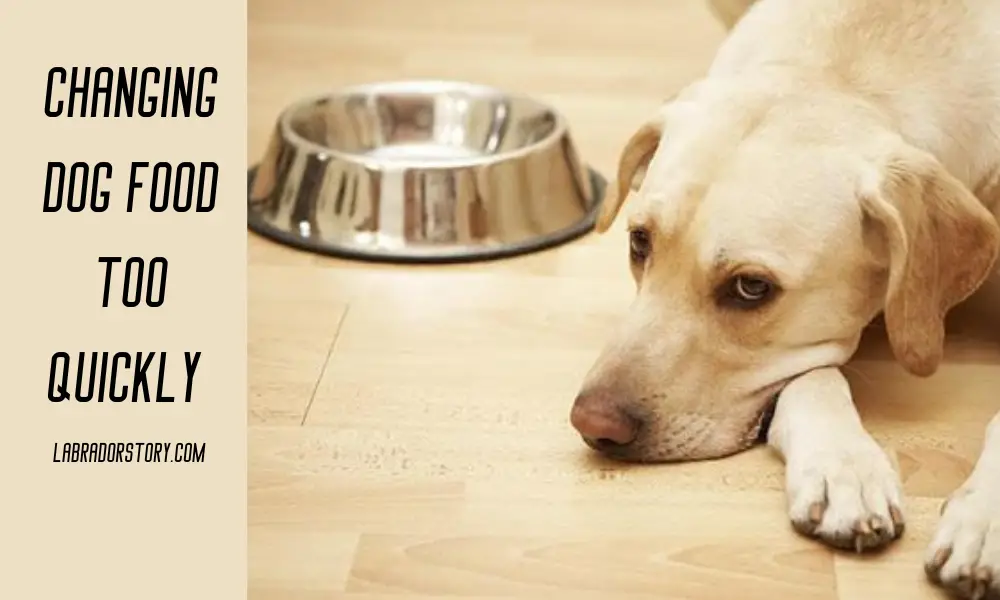Last Updated on November 17, 2023 by Linda Richard
Dogs are omnivores so you’d think they rarely have digestive problems. Not always true, however. Here are some changing dog food too quickly symptoms and how to fix them. We’ll go over what you can expect, how to avoid most issues, and what to do if some problems arise. A vet’s recommendation should always take priority over anything we say, of course, but these are some good general tips that will likely help you avoid any issues in the first place.
Table of Contents
Changing Dog Food Too Quickly Symptoms
The main symptoms you may encounter when changing food are not as serious, but can lead to more serious consequences if your dog has any underlying health issues. Here’s what can happen initially:
- Vomiting
- Diarrhea
- Gas
- Upset stomach
- Panting and salivation
- Nausea
- Dizziness
- Uncontrolled peeing
- Dehydration (from the vomiting and peeing)
- Hyperactivity
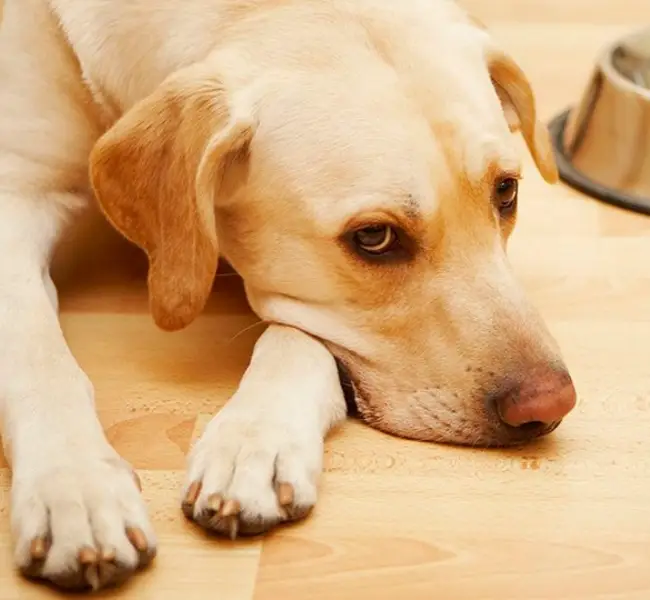
If you notice any or a few of these issues after you’ve changed your dog’s diet, contact your vet immediately, They should know what are the specific underlying conditions and predispositions of your dog, whether you should be worried about any of those symptoms, and what you should do next. Ideally, you will have called your vet even before you made the switch but it’s better late than never.
If your dog is experiencing diarrhea or vomiting you might want to skip the next meal and offer plenty of clean water. Offering some plain pumpkin or boiled white rice can also help harden your dog’s stool. That’s why new food slowly introduced into the diet. After all, I’m sure you want to avoid or minimize all unpleasant symptoms in your pet.
Go Slow Instead To Avoid The Changing Dog Food Too Quickly Symptoms
If you want to switch your pet to new dog food, we recommend a gradual transition. This will help him to avoid digestive upset. This process usually takes about a week and you should monitor your pet to make sure everything is going well. Switching dog food is not a difficult process and requires a little patience.
Start by mixing a small amount of the new dog food into the old food and then gradually change the ratio of old to new food over the course of a week or so until the pet is finally on the new food. For the first few days, give about 25% of the new food and 75% of the old, and watch the animal’s behavior and food intake.
If after a couple of days the animal is doing well, start increasing the amount of new food and decreasing the amount of old dog food. Gradually increase the proportion of new food so that after four days the ratio is 50/50 and after six days it is 75% new dog food and 25% old food. Finally, if the dog tolerates the food well, after seven to eight days, switch him to 100% of the new food. When switching to the new food, it is recommended that you stick to your pet’s usual feeding schedule and location. If you have any doubts about switching your pet to the new food, consult your veterinarian.
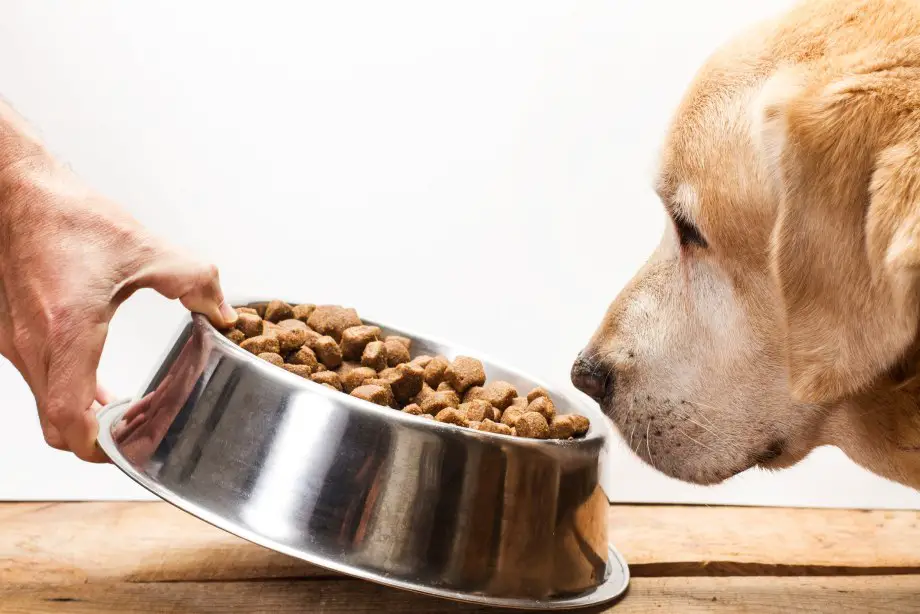
After the pet has switched to a new food and stopped receiving the old one, feed it the new food for at least two months. This way, the pet will be able to experience all the benefits of the new food, and you will be able to see if it is suitable for him. A properly selected diet will also affect the appearance of the animal: in addition to improving digestion and stool quality, you can expect normalization of weight, improved skin and coat.
Owners who have switched their pets to a special diet for medical reasons are advised to visit a veterinarian to make sure that the change in diet improves the animal’s health.
Read more about: Tail-wagging taste: the best dog food for Labrador Retrievers
Switching Dog Food Cold Turkey
Switching dog food without mixing is usually frowned upon but it’s often just necessary. Not only are we sometimes just too busy, especially when we’re lone dog owners, but there are also quite a few dog-related reasons to go cold turkey:
- The old dog food simply isn’t available anymore
- The old food turns out to be extremely unhealthy and you need to cut it as soon as possible
- You’re switching from food with grains to one that’s 100% grain-free and the two can cause digestive issues when mixed
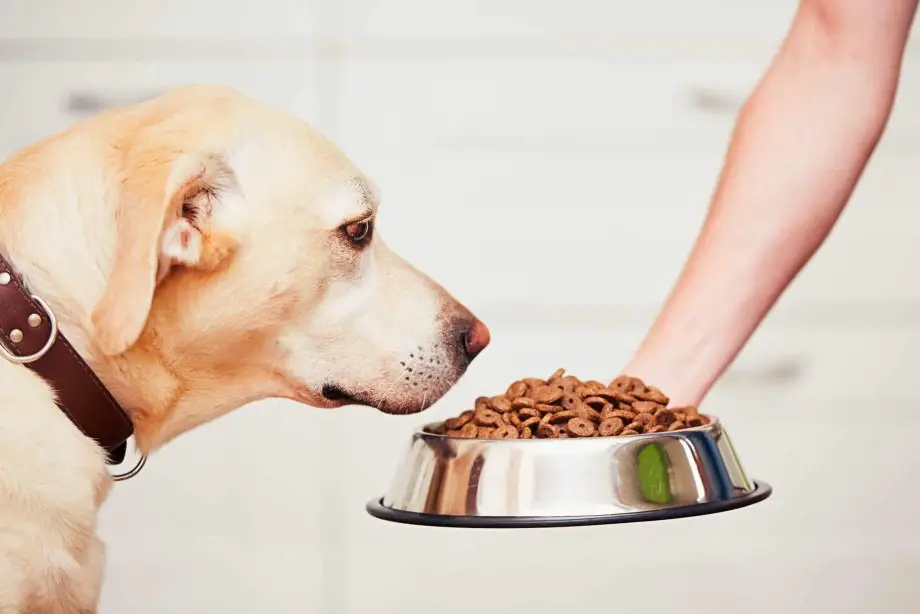
If any such concern is forcing you to go cold turkey, there are still things you can do to make sure everything goes smoothly. Obviously, contacting your vet ahead of time is important but the basic steps are pretty simple:
- First, fast your dog a bit by skipping a single meal. This is done to ensure that your dog’s stomach is empty and all the previous food is properly digested. Skipping two meals is not necessary or recommended.
- Make the first meal of the new diet small – you don’t want to suddenly overfeed your dog.
- Add some probiotics such as plain pumpkin or food supplements.
- Monitor your dog’s behavior in the first 12 to 24 hours for any of the aforementioned symptoms. Call your vet if you see anything unusual. Make sure your dog has access to plenty of clean water too.
When should you consider changing your dog’s diet?
There may come a time when your dog needs to change his diet. This need can be for a variety of reasons:
- A dog’s transition into one of three major life stages: puppy, adult dog, and senior dog. Each of these life stages is unique, and meeting your pet’s emerging individual needs can be accomplished with appropriate nutrition. Puppy food has its own specific composition, because puppies need additional important elements for growth and development.
- Your dog is pregnant. Lactating bitches need extra energy, so they may need a new diet more suited to their nutrient needs.
- A disease or condition where your dog needs additional supportive nutrition, such as skin sensitivity or digestive disorders, food allergies.
- You have researched different dog foods or consulted a veterinarian and have decided to change your pet’s food.
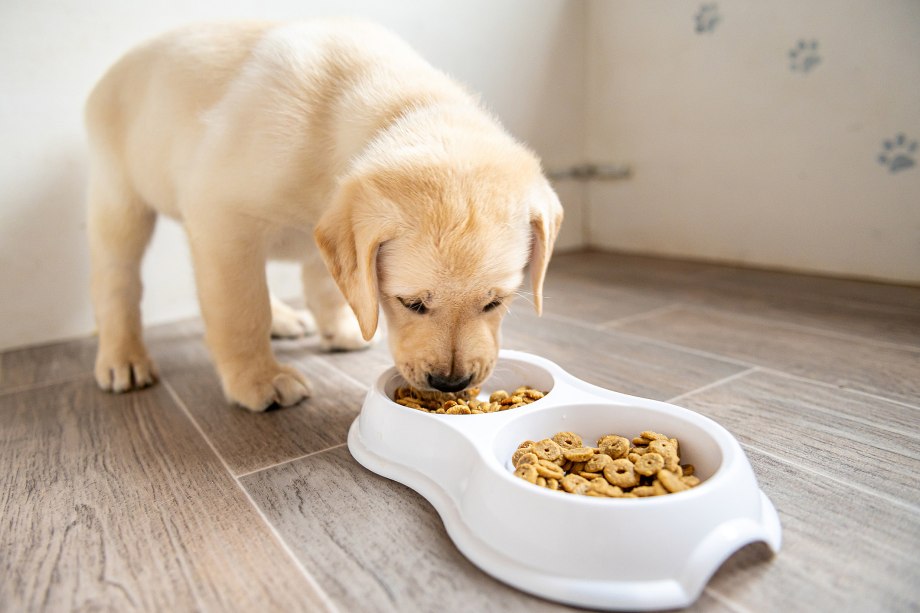
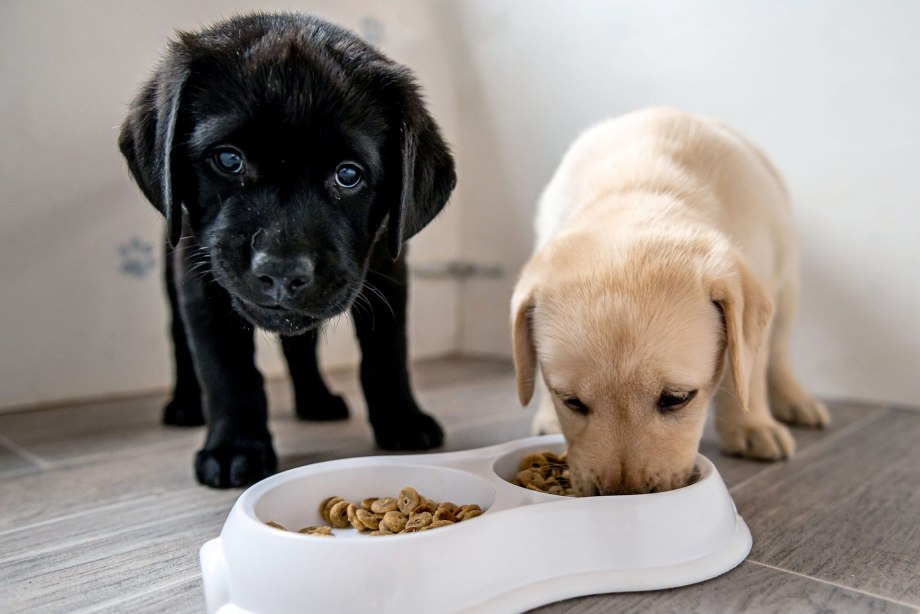
Image source: sobakovod.club
Signs That Your Dog Needs a Change in Diet
There are several important signs that indicate your dog should be switched to a new food.
- A dull, thin coat may indicate that the dog is not getting the nutrients it needs.
- Liquid stools and flatulence can be a sign of food intolerance or the result of eating poor quality food.
- Low energy levels.
- Overweight or obese dogs may need to switch to a new food rather than simply reducing their diet.
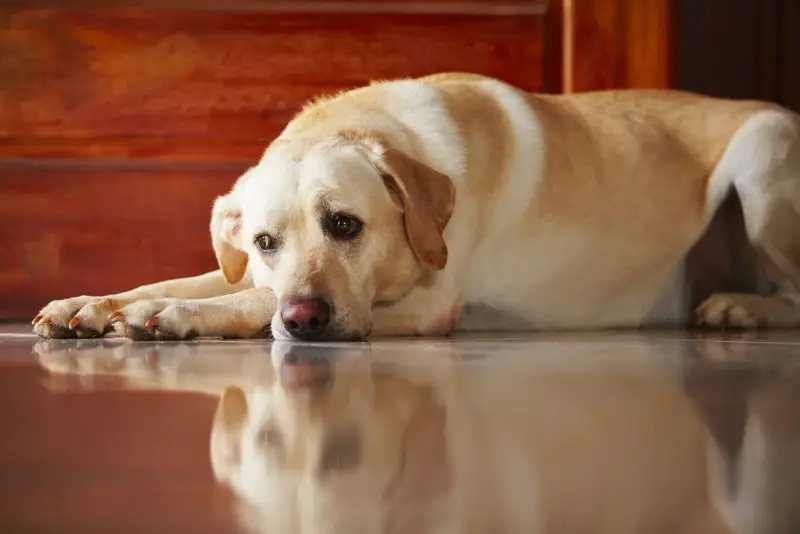
This way, you can be sure that your dog is getting the right nutrients in the right amounts while ensuring a safe and gradual weight loss to normal levels.
If you have any concerns about your dog’s health, your vet will help you find the most suitable diet for your dog. The veterinarian will also explain to you how and when to transition your pet to the new food. The expert advice will help make the transition easier.
What Are The Changing Dog Food Too Quickly Symptoms and How To Avoid Them?
As you can see, the symptoms of changing your dog’s diet too fast can range from annoying to quite unfortunate. Vomiting, diarrhea, gas, and an overall stomach upset are the initial symptoms you can expect to see. If your dog has some underlying conditions, additional health problems are possible which is why it’s wise to always contact your vet as soon as you notice anything weird.
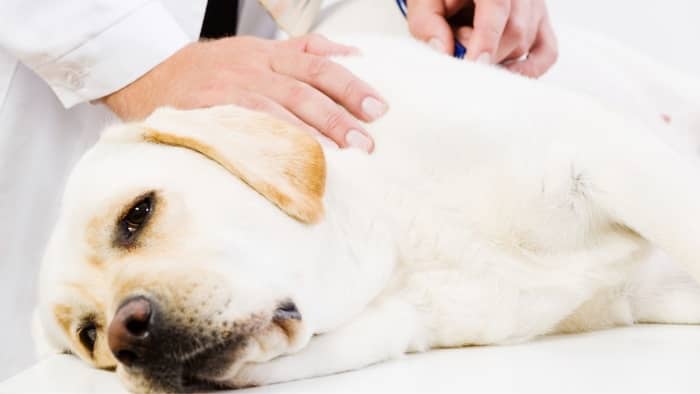
Such symptoms aren’t that common with healthy dogs, however, so as long as you’ve chosen a good new food, everything should be fine. Going slow is usually recommended but even if you try switching cold turkey your dog will still likely be ok. Just fast your pooch first, starts with smaller portions, add some probiotics, monitor your dog for any symptoms, and everything should be ok.
Сonclusion
So, what’s the best way to avoid any of the above changing dog food too quickly symptoms? Obviously, by just not going too quickly. Many pet owners dismiss this advice because they don’t like the extra hassle, but switching slowly is usually the best way to avoid most problems. Your dog’s health is the very first factor to consider when making dietary changes!
How is this done? Simple – start by mixing a bit of the new food in your dog’s old food. A 72/25 ratio is a good starting point but you may need to go 90/10 if your dog doesn’t like the new food. Then, increase the new food ratio every few days until you get to 50/50 by the end of the first week. Keep going until you’re feeding your dog 100% new food after a couple of weeks.
This method is very easy to do if you’re switching one type of wet/canned food with another. If you are switching from wet food to dry food dog or vice versa, this is also possible, it just looks sloppy and weird.
FAQs
How to change dog food quickly?
When it comes to switching your dog’s food to something else, the wise thing is to do so slowly. A gradual switch lasting one or two weeks will usually guarantee that your dog easily accepts the new food and that there are no health problems and unfortunate symptoms such as vomiting and diarrhea.
Sometimes the switch does need to be done quickly, however. It may be because the old food is suddenly unavailable, because it doesn’t mix well with the new food (grains and grain-free raw diet, for example), or for other reasons. In these cases, the way to do the quick switch right is fairly simple.
First, fast your pet for a meal (not more). This will ensure that your pet’s stomach is empty when you introduce the new food. To avoid any frustration, you can distract your pet with an interesting activity or just time it so that you’re not home.
Next, Make sure that the first couple of meals are smaller as you don’t want to introduce too much of the new food all at once. Lastly, consider adding some probiotics to the food at first. Pumpkin is a good natural source of probiotics or you can use a good commercial probiotic food supplement brand.
